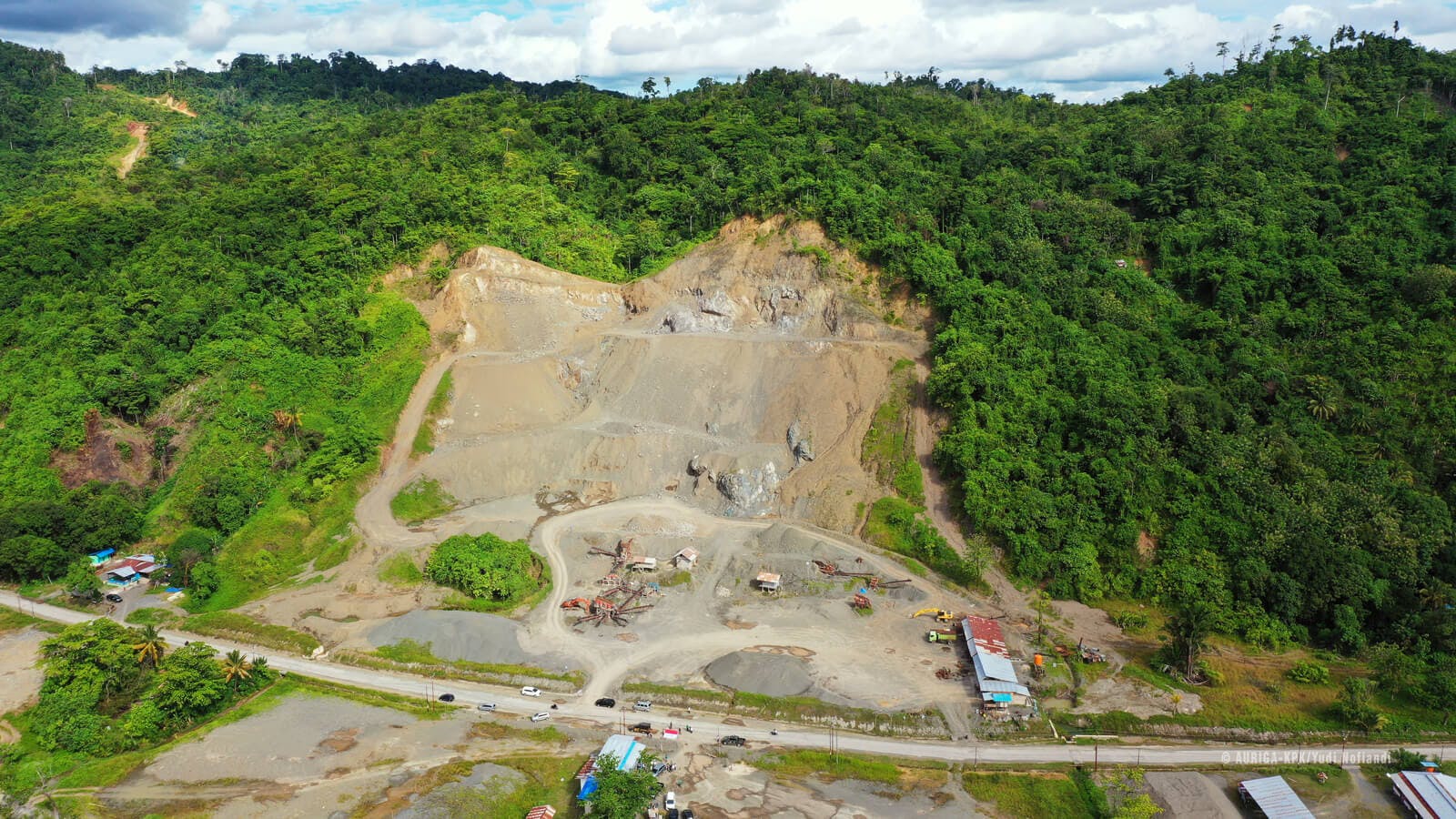
Infographic Series: Debt and Forest Risk Connections
Governments are facing unprecedented pressure by creditors to repay debt - potentially endangering hundreds of millions of hectares of forests threatened by extractive industry expansion.

This new mapping and analysis, based on World Bank data, exposes links between sovereign debt levels to the expansion of oil, gas, and mining in the world’s most intact forests, threatening the survival of vital ecosystems. This infographic series presents evidence from three case studies in the Amazon, Congo, and Southeast Asia regions where debt distress has accelerated extractive expansion.
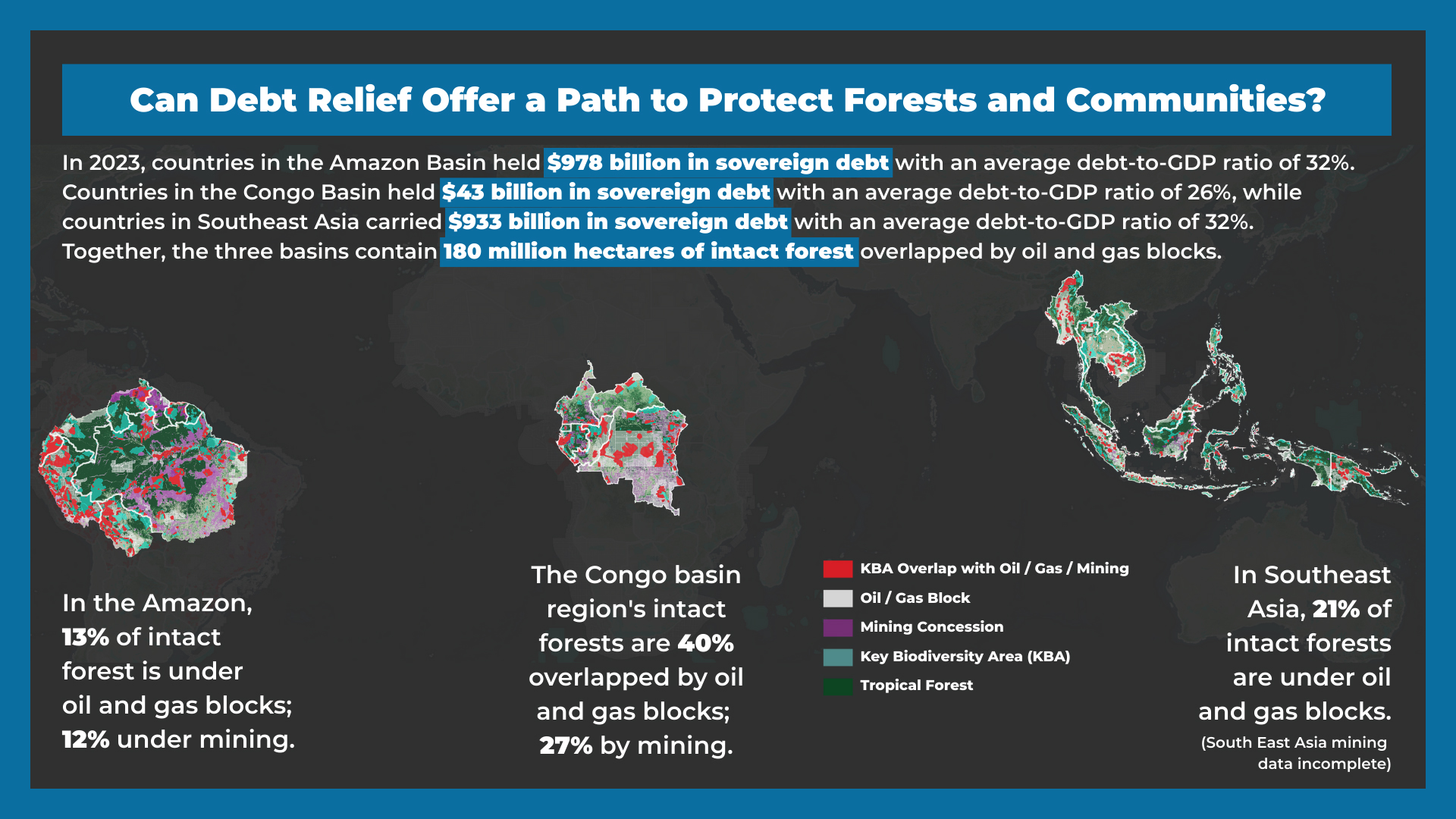
Since 2010, debt in developing economies grew at double the rate of developed economies, along with a narrowing fiscal space for social and economic development as well as conservation. Nearly half of the world’s population lives in a country which must devote more resources to debt service than to health, education, and infrastructure combined.
The threat of a debt crisis can render nations vulnerable to natural resource extraction as an option that seems to offer a secure pathway to revenue in the US dollars needed for debt servicing. A vicious cycle of expensive external debt and expanding resource extraction, coupled with the growing need for financial resources targeting climate-related disaster recovery and adaptation may lead to even further climate vulnerability and further industrial expansion.also threatens biodiversity.”
Basin Overview
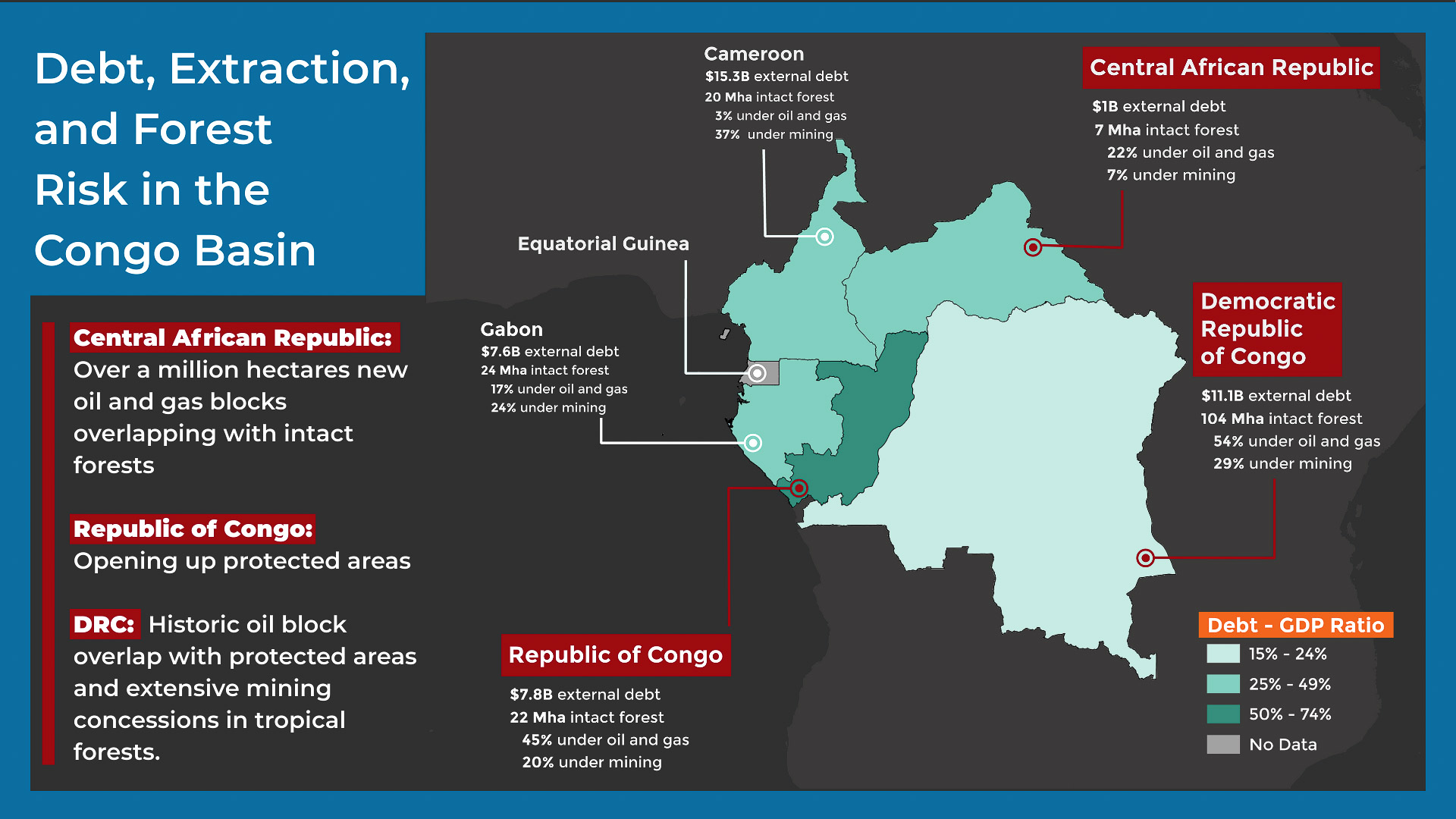
- Republic of Congo has the highest debt to GDP ratio in the Congo basin region and is now in the process of opening up its most biodiverse national park to oil drilling - Conkouati Duli and there is still time for this trajectory to shift
- The Congo Basin has $43B of debt amounting to 26% of the region’s GDP, 40% (65.8 Mha) of the tropical forest is under oil and gas blocks and 27% (61.2 Mha) under mining.
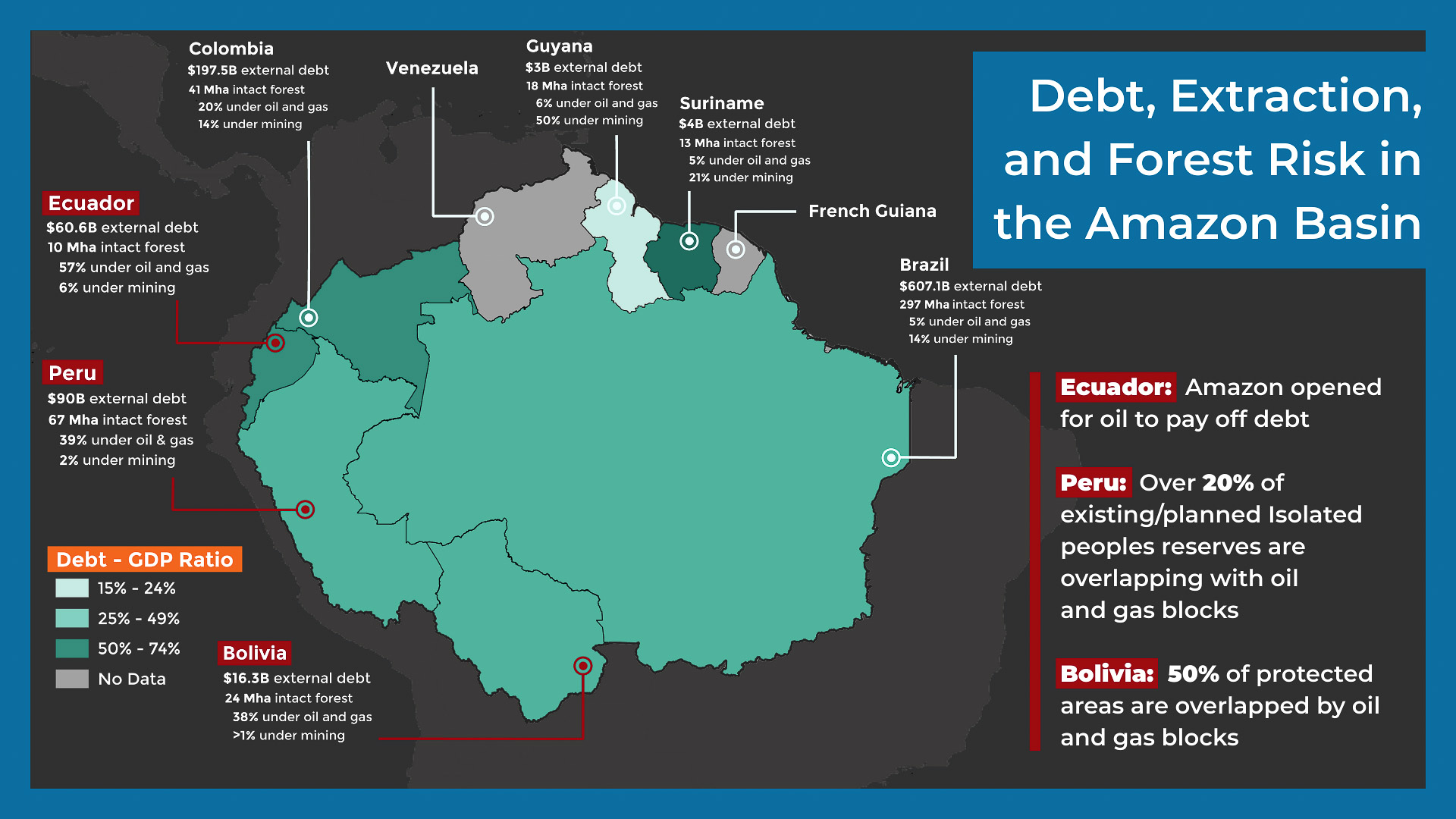
- The Amazon has $978B of debt amounting to 32% of the region’s GDP, 13% (65.8 Mha) of the tropical forest is under oil and gas blocks and 12% (61.2 Mha) under mining.
- Ecuador is a cautionary tale as it has expanded oil drilling in the Amazon to pay off debt which has reached ~$60B, over 50% of GDP and has 57% of intact Amazon forest under oil/gas blocks.
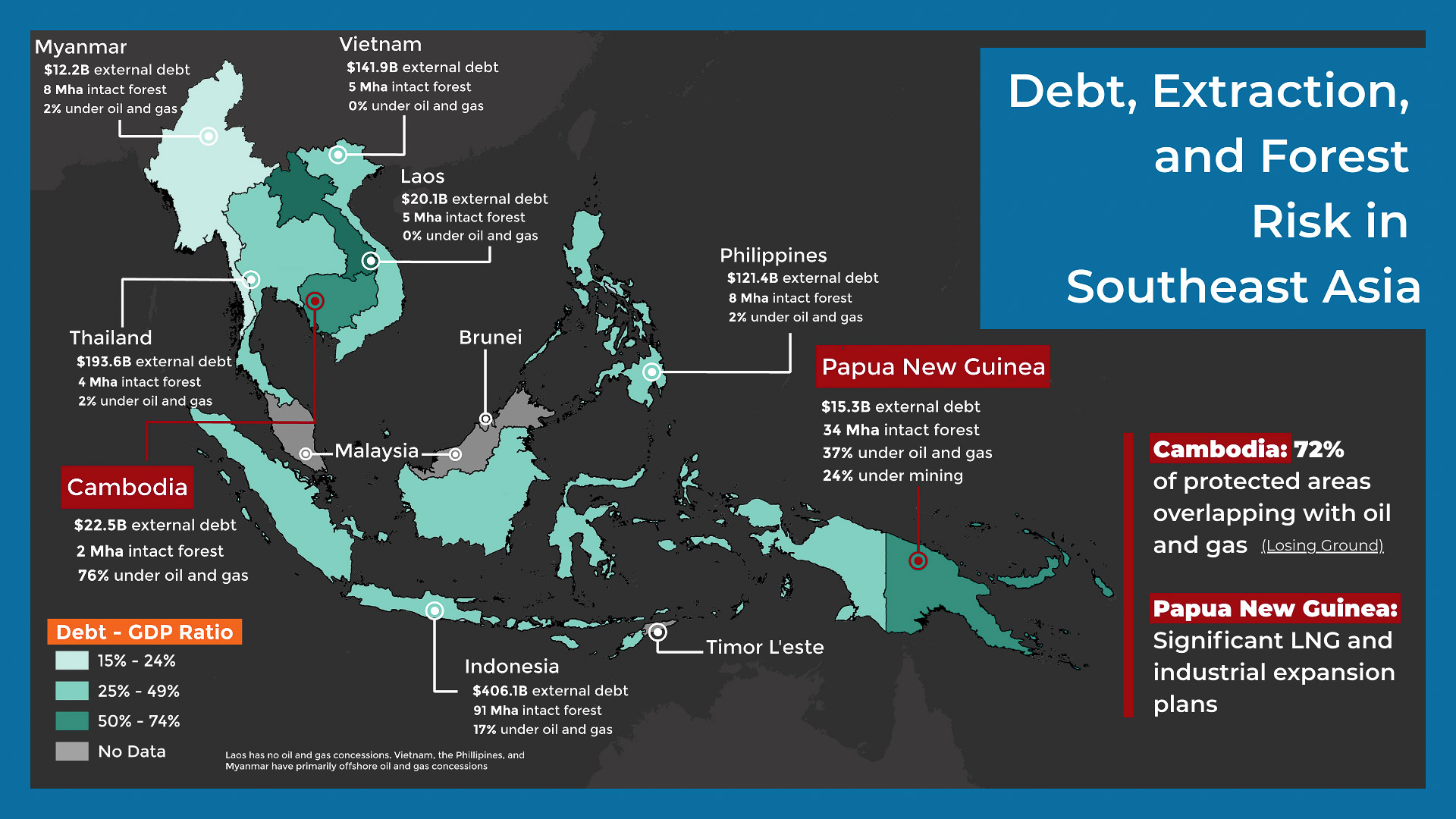
- Southeast Asia has $933B of debt amounting to 32% of the region’s GDP, with 21% (65.8 Mha) of the tropical forest under oil and gas blocks.
- Papua New Guinea’s Debt to GDP ratio climbed to 52% by 2023, it has 37% of intact forest under oil/gas and 25% under mining - with significant plans for industrial expansion
Tropical forest countries host 80 percent of the earth’s remaining intact forests and highest biodiversity. Newly released maps from forest countries Ecuador, Republic of Congo and Papua New Guinea vividly illustrate the extent of extractive concession overlap with tropical forests. As industrial activity surges throughout the pantropical belt, the debt burden governments must carry shows no signs of respite.
Urgent Action Needed:
The pantropics not only harbor immense biodiversity but also serve as vital carbon sinks, regulating the global climate. Industrial activity in these regions threatens to push fragile ecosystems past tipping points, with potentially irreversible consequences for both nature and human populations.
The research points to calls for urgent action to address the debt crisis, including:
- Cancel illegitimate and unsustainable debt.
Systemic reform of processes that have resulted in external debt inequities and lack of economic autonomy for low income nations.
- Embed climate and nature into debt sustainability frameworks.
Climate change risk needs to be considered a critical factor in debt sustainability assessments.
- Restrict industrial expansion into forests and Indigenous lands.
A moratorium on industrial activity in primary forests until 2050 to create space and advance solutions which reduce the risk and impacts of crossing ecological and climate tipping points.
- Fund forest conservation with grants, not loans.
Coupled with large-scale debt relief, these interventions can leverage hundreds of billions of dollars for safeguarding forests and expanding rights and territories for Indigenous peoples and local communities.

